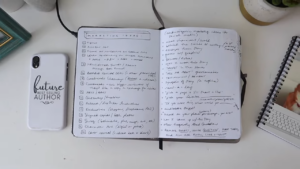Romance novels are very popular types of books all around the world. They explore the joys and challenges of falling in love, whether set in present times, the past, or even magical fantasy worlds. What draws people in is getting to know characters in that hopeful, sometimes messy early stage of really caring about someone.
Through the characters’ eyes, readers experience what it’s like to have strong feelings for another person – that attraction, anticipation, vulnerability and sheer excitement. Their relationship grows in a way readers can root for from the sidelines. It keeps us eagerly flipping pages to see what happens next.
While romance tales are so popular, crafting one well isn’t simple. It takes creativity, organization, and revisions – just like other genres. There are also certain expectations based on what romance readers love finding between the covers. Readers want to see heartfelt moments where each character helps the other discover who they are and what they really want out of life and love. Plus plenty of dialogue to really get to know these people!
Even with guidelines, writers have the freedom to explore all types of connections through unique settings and perspectives. As long as characters’ chemistry and personal growth remain front and center, and romance tale stands to offer readers comfort, hope – and maybe a reminder of what really matters most in this life.
A Simple Recipe
Writing a romance novel requires creativity and skill. These are the most important ingredients:
| Ingredient | Significance |
|---|---|
| Initial Meeting | Sets the stage and introduces the characters. |
| Attraction | Going deeper into the narrative and establishes a romantic connection. |
| Blossoming Romance | Further explores the relationship. |
| Conflict | Introduces tension and challenges. |
| Resolution | Brings growth, understanding, and the resolution of challenges. |
| Happily Ever After | Offers closure and fulfillment, leaving readers with a sense of satisfaction and hope. |
Set the Story

Choosing an authentic setting is important for any romantic relationship depicted in a story. The location shouldn’t simply be in the background but actively shape how the characters interact.
The environment should reflect their emotional experiences during pivotal moments. Specific places provide opportunities to deepen their connection while facing challenges together. An accurately portrayed setting transports readers to the characters’ world. With research, every detail can enhance their journey.
Character Development
What keeps readers engaged is gaining insight into who these people truly are. To craft believable characters, the author takes time learning their unique qualities, histories and inner motivations.
Readers connect most to characters who feel real. We’ve all known uncertainty in love or wanted self-improvement. By depicting both strengths and weaknesses, the relationship’s progression seems genuine rather than flawless.
The Essence of Emotional Depth
For their bond to feel meaningful, the story shows the characters’ deepest feelings – what they desire and fear most. These intimate human experiences resonate universally because we’ve all known seeking acceptance or vulnerability in love.
By delineating emotions, facing difficulties and triumphs together gains profound impact. Readers fully invest in seeing how these individuals learn about each other and themselves through life’s complexities with empathy, honesty and care.
Know How to Engage Your Audience
Knowing your intended audience is key. When writing about relationships, acknowledging peoples’ varied backgrounds and experiences leads to stronger connections.
Focusing on mutually respectful partnerships adds depth by representing diverse realities. Respect, consent, and care should define all interactions. This approach invites wider discussion by reflecting the full spectrum of human experience.
The Role of Secondary Characters

Beyond the protagonist, additional player’s actions and arcs can significantly influence a story’s depth. Secondary characters intersect with and affect the main journey in meaningful ways.
Thoughtfully developing supporting roles populates the narrative world richer. Their perspectives provide angles to see themes emerge with nuance. Likewise, how these characters relate and respond to pivotal events further impacts readers’ engagement.
Summary
The bottom line is, that romance stories really connect when readers see themselves in the characters facing relatable relationship issues. Authors need to flesh those people out as fully-rounded individuals navigating believable scenarios for audiences to stay engaged in their journey.
Including a variety of backgrounds and viewpoints adds more layers to the story in an authentic way, just as diverse friends and situations do in the real world.
Hi, I’m Stacey Bennett. I studied literature and now specialize in teaching writing. I focus on helping others achieve their highest potential in writing, guiding them through the techniques and practices that lead to success.








